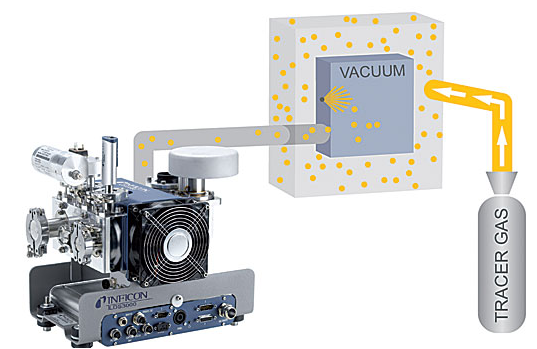Transmission Testing Turns to Helium Leak Detection Technology
Helium leak-detection systems are helping transmission suppliers improve quality and reduce the cost of producing new automatic transmissions developed to improve fuel economy.
The demand is clear. Due to the complex operation of new multi-speed transmissions, transmission-fluid leaks can significantly affect performance. Detecting leaks at the earliest stages of manufacture, post-casting and pre-assembly, improves quality and customer satisfaction while reducing costs.
One company, KUKA Assembly and Test Corporation, for example, has developed leak-detection systems that it claims “are faster and more reliable than more traditional air-test methods.” KUKA systems now use INFICON helium-leak detectors to test advanced transmissions such as newer aluminum automatic 9- and 10-speed transmissions.
“Historically most leaks are discovered at or after final assembly,” notes Steve Kurzava, a KUKA technical specialist. “KUKA systems equipped with INFICON helium leak detectors can be used to detect leaks soon after the original casting takes place, reducing cost by eliminating defective castings early in the build process.”
As part of the testing, the transmission is inserted into a sealed enclosure injected with helium and connected to an INFICON leak detector. Any helium that passes through cracks, tiny holes or any other pathways can be quickly detected and quantified by the leak detector.
“Helium leak detectors are much more accurate than air or underwater testing methods for identifying porosity leaks,” explains Thomas Parker, INFICON’s automotive sales manager for North America. “Cast aluminum products, for example, may have a one-inch diameter area with up to a trillion holes that helium molecules can migrate through. Porosity of this kind could never be detected by air or water testing.”
Category: Engines













